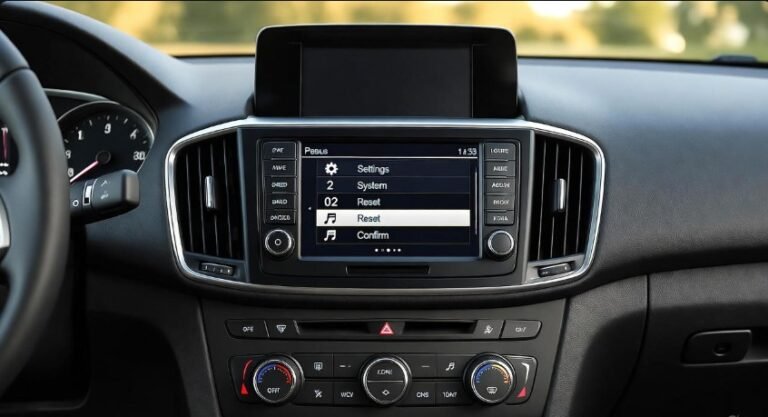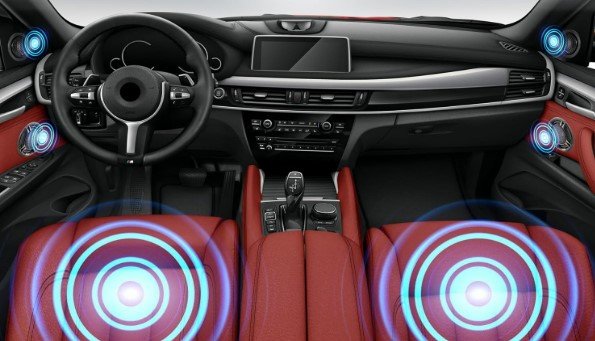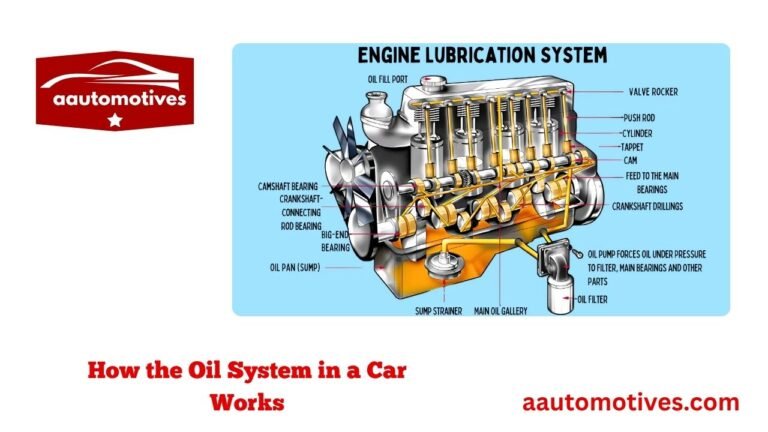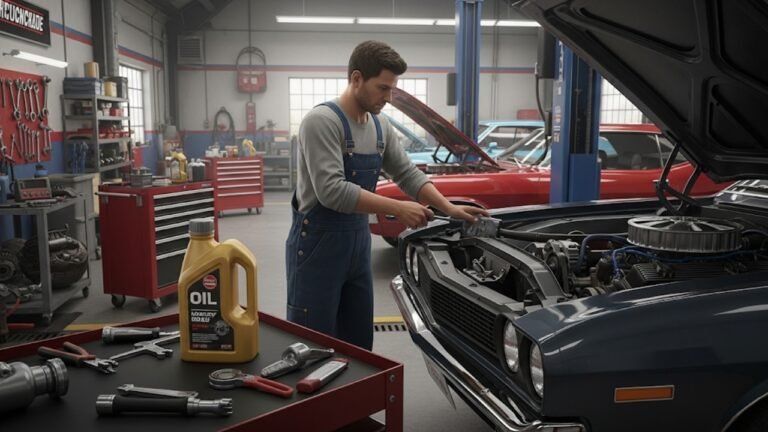What is IWE on Ford F150? Unveiling the Hidden Power Behind IWE Technology
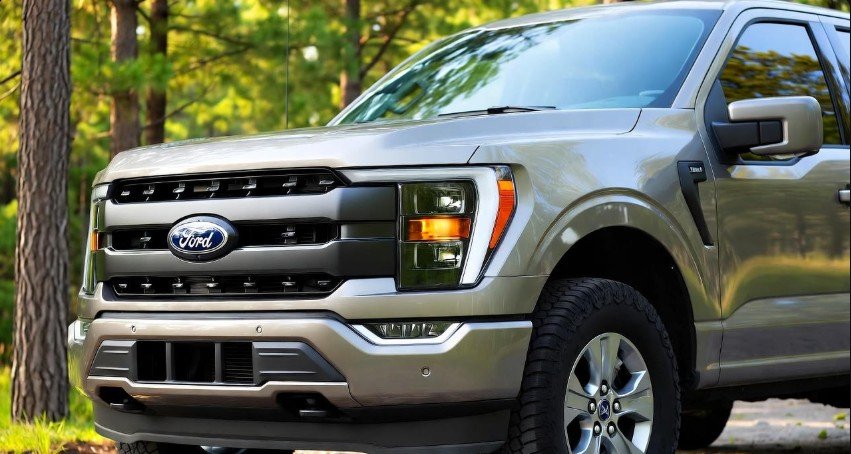
If you’ve ever driven or admired a Ford F150, you already know it’s not just a truck — it’s a symbol of American toughness, reliability, and smart engineering. But what many people don’t realize is that behind the F150’s smooth switch between two-wheel drive and four-wheel drive, there’s a clever system working quietly beneath the surface — the Integrated Wheel End (IWE).
So, what exactly is IWE on Ford F150 and why should you care? Imagine being able to cruise efficiently on highways and instantly command strong traction when the road gets rough — all without manual effort. That’s what IWE technology makes possible. It’s a blend of mechanical precision and smart automation designed to enhance fuel economy, reduce wear, and improve overall drivability.
In this article, we will take a deep dive into the hidden power of IWE technology, how it works, why it is special, and how to keep it running smoothly for years. If you love understanding what makes your truck tick, this guide is for you.
What Is IWE on Ford F150? A Hidden Hero Under the Hood
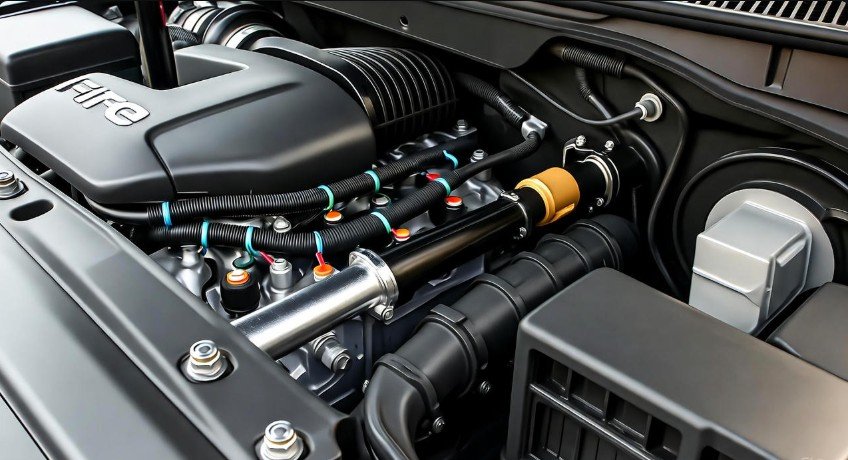
The Integrated Wheel End system is one of those underappreciated features that make the Ford F150 such a capable and efficient machine. Simply put, it is a mechanism that connects and disconnects the front wheel hubs when switching between two-wheel drive and four-wheel drive.
When your truck is in two-wheel drive mode, the IWE system disengages the front wheels from the drivetrain. This means your front wheels spin freely, reducing resistance and improving fuel efficiency. Then, when you switch to four-wheel drive, it re-engages those hubs, giving you the grip and control you need for rough or slippery terrain.
This system may sound small, but it plays a massive role in the F150’s performance, helping it stay strong on rugged trails yet economical on highways.
In simple terms:
-
In two-wheel drive mode, front hubs disengage for less drag and better mileage.
-
In four-wheel drive mode, front hubs engage for more traction and better control.
Whenever your F150 effortlessly transitions from a city cruiser to an off-road beast, the IWE system is working silently under the hood.
How the IWE System Works: A Smooth Blend of Power and Precision
The IWE system is not just a single part but a combination of components working together seamlessly. The heart of the system is a vacuum-operated mechanism. When the truck is in two-wheel drive mode, the system uses engine vacuum to disengage the front hubs, allowing the wheels to spin independently.
The IWE solenoid acts like a gatekeeper, regulating the vacuum pressure that determines when the hubs engage or disengage. Hub locks mechanically connect or disconnect the axle shaft from the wheels, depending on the drive mode selected. Meanwhile, the vehicle’s onboard computer communicates with the IWE system to ensure flawless timing whenever you switch between two-wheel drive and four-wheel drive.
This coordination makes the transition so smooth that most drivers do not even feel it happening, yet it is a complex dance of mechanics and electronics under the surface. It is like a smart gate between your engine and your wheels, opening only when the road demands it, and closing when efficiency is the priority.
Why Ford Designed IWE: The Perfect Balance of Strength and Efficiency
When Ford engineers designed the IWE system, their goal was clear: to make the F150 more efficient without compromising performance. Traditional four-wheel drive systems kept the front wheels constantly engaged, which added extra drag and consumed more fuel even when four-wheel drive was not needed.
With IWE technology, that problem was solved. By disengaging the front drivetrain when not required, the truck could save fuel while still being ready for action at a moment’s notice.
| Feature | Traditional 4WD System | IWE System (Ford F150) |
|---|---|---|
| Fuel Efficiency | Lower due to constant drag | Higher with disengaged hubs |
| Wear & Tear | More wear on front drivetrain | Reduced component wear |
| Engagement Type | Manual or mechanical | Automatic (vacuum/electronic) |
| Noise Level | Often noisy engagement | Quieter and smoother |
| Driving Feel | Heavier steering | Light and responsive |
The Integrated Wheel End system gives you the best of both worlds — power when needed, economy when not.
Benefits of IWE Technology in the Ford F150
The IWE system might be tucked away out of sight, but its advantages are clear every time you hit the road.
Improved Fuel Efficiency: By allowing the front hubs to disengage during two-wheel drive operation, the IWE system reduces the rotating mass in the drivetrain. This leads to less drag and ultimately better fuel economy, especially during highway cruising.
Reduced Wear and Tear: Since the front axles and differential are not constantly spinning, there is less mechanical stress. Over time, this means fewer repairs, longer component lifespan, and lower maintenance costs.
Enhanced Driving Comfort: The IWE system contributes to a smoother and quieter ride. Without the extra resistance from engaged hubs, steering feels lighter, and road vibrations are minimized, especially during long-distance drives.
Instant Traction When You Need It: When the road turns slippery or you hit muddy trails, the system automatically re-engages the hubs. This ensures instant traction without any lag, giving you more confidence and control.
The IWE turns the Ford F150 into a vehicle that is equally at home in a city parking lot or on a mountain trail.
Understanding the Key Components of IWE
To truly appreciate how the Integrated Wheel End system works, it is important to look closer at its main components. Each part plays a vital role in making the system reliable and responsive.
IWE Solenoid: This is the system’s control valve. It decides when to send or cut off vacuum pressure to engage or disengage the hubs. A faulty solenoid can cause the system to malfunction.
Vacuum Lines: These tubes carry the vacuum pressure required for hub operation. If they develop leaks or blockages, the system cannot function properly.
Vacuum Reservoir: It stores vacuum pressure and ensures the system can activate even if the engine vacuum drops temporarily.
Hub Locks: These are the mechanical couplers that connect or disconnect the wheel hubs. When vacuum pressure is applied, they release; when vacuum is removed, they engage.
Check Valves: These ensure that vacuum pressure only flows in one direction, maintaining proper control.
When all these components work in harmony, you get a system that is efficient, responsive, and durable.
Common Problems with the IWE System and How to Spot Them
Like any complex mechanism, the IWE system can occasionally run into issues. Many of these problems are easy to identify and fix with timely maintenance.
Grinding Noise from the Front Wheels: Often caused by partial engagement of the hubs due to vacuum leaks or a failing solenoid.
Failure to Engage 4WD: If your truck refuses to switch into four-wheel drive mode, a broken vacuum line or damaged hub actuator could be the cause.
Clicking Sound When Accelerating: This can mean that the hubs are not fully disengaging, causing unwanted friction.
Poor Fuel Economy: A constantly engaged front hub system can cause unnecessary drag.
If problems persist, it is best to visit a certified Ford technician who can diagnose using specialized diagnostic tools.
Maintenance Tips to Keep Your IWE Running Like New
Maintaining the IWE system does not require expert-level mechanical skills, just a little care and regular inspection.
Check Vacuum Lines Regularly: Look for cracks or leaks that could affect pressure.
Clean the Hubs: Dirt and debris can prevent smooth engagement. Periodic cleaning helps maintain precision.
Listen for Unusual Sounds: Clicking or grinding usually signals a problem with the hubs or solenoid.
Replace Worn Seals: The vacuum seals are vital for proper function. If they fail, replace them immediately.
Lubricate Components: Light lubrication helps reduce wear and prolongs part life.
When maintained properly, the IWE on Ford F150 can last for many years without significant issues.
Comparing IWE with Traditional 4WD Systems
To understand how advanced the IWE technology is, it is useful to compare it to older four-wheel drive setups.
| Feature | Traditional 4WD | Ford F150 IWE System |
|---|---|---|
| Engagement Method | Manual or mechanical | Automatic vacuum-controlled |
| Fuel Efficiency | Moderate | High |
| Component Wear | Higher due to constant motion | Lower due to disengagement |
| Noise Level | Louder | Quieter |
| Maintenance Needs | More frequent | Less frequent |
| Response Time | Slower | Instantaneous |
Unlike older systems where you had to manually lock the hubs, the IWE system automatically takes care of everything, seamlessly blending convenience and performance.
Real-World Applications: How IWE Transforms the Ford F150 Experience
The IWE is not just another mechanical innovation, it is a game-changer in how the Ford F150 performs both on and off the road. On highways, the front hubs disengage for reduced friction and improved fuel efficiency. On rough terrain, the system instantly engages the hubs for maximum traction. Drivers describe it as offering the best of both worlds: efficiency during daily drives and full power when adventure calls.
Testimonials: What Real F150 Owners Say About IWE
F150 owners have praised the IWE system for its balance of performance and practicality. Many mention seamless transitions between two-wheel drive and four-wheel drive, fuel savings during daily commutes, and confidence in off-road situations. The system is described as durable, reliable, and intelligent in adapting to different driving conditions.
Troubleshooting the IWE System: Common Fixes That Work
Even though the IWE system is designed for durability, occasional issues can occur. Grinding noises, failure to engage 4WD, constant clicking sounds, and vacuum system issues are common signs. Checking vacuum lines, solenoids, hub assemblies, and reservoirs often resolves the problems. Routine inspections every 10,000 miles can prevent expensive repairs.
Future of IWE Technology: Where Ford Is Headed Next
Ford is refining IWE systems for future models with advanced electronic control units, improved sealing materials, lightweight components, and sensor integration. These innovations aim to make engagement faster, more reliable, and more efficient. Future systems may predict traction needs and engage 4WD before slippage occurs, further improving safety and performance.
Comparing IWE Across Ford Models
Although the IWE system is most commonly associated with the Ford F150, Ford also uses similar systems in other trucks and SUVs, including the Expedition, Ranger, and Super Duty models. Each system is optimized for the vehicle’s intended use, whether that is towing, off-roading, or daily commuting.
Why IWE Technology Matters More Than Ever
In a world shifting toward smarter and greener vehicles, innovations like the IWE system are increasingly important. It reduces fuel consumption, extends drivetrain life, improves driver comfort and safety, and enhances performance. IWE is a small but essential system with a significant impact on overall driving experience.
FAQs About IWE on Ford F150
What does IWE stand for in Ford vehicles?
IWE stands for Integrated Wheel End, a system that controls the engagement of the front wheel hubs in Ford’s 4WD vehicles.
How do I know if my IWE is failing?
Common signs include grinding noises, difficulty switching to 4WD, or a persistent clicking sound from the front wheels.
Does the IWE affect fuel economy?
Yes, the IWE improves fuel efficiency by disengaging the front wheels during two-wheel drive driving, reducing drag.
Can I drive with a faulty IWE?
It is not recommended. Driving with a malfunctioning IWE can lead to increased wear on the drivetrain and potential 4WD failure.
How often should I service the IWE system?
Inspect vacuum lines, solenoids, and hubs every 10,000 to 15,000 miles to ensure smooth operation.
Is IWE better than traditional 4WD?
In most cases, yes. It offers automatic engagement, better efficiency, and lower maintenance compared to older manual systems.
Can I replace IWE parts myself?
Minor parts like vacuum lines or solenoids can be replaced at home, but complex repairs should be handled by professionals.
What happens if the IWE vacuum line leaks?
A vacuum leak prevents proper hub disengagement, causing the system to malfunction. Immediate repair or replacement is necessary.
Conclusion
At first glance, the IWE on Ford F150 might seem like just another technical component, but in reality, it is the unsung hero that brings together efficiency, performance, and innovation. It allows the truck to operate smoothly in two-wheel drive mode and switch instantly to four-wheel drive when needed.
This technology reflects Ford’s vision to build trucks that work smarter, not harder. The Integrated Wheel End system saves fuel, reduces wear, and provides responsive power when it is needed most. Whether conquering muddy trails, towing, or cruising on highways, the IWE system ensures the F150 performs flawlessly. Next time you feel that seamless shift from two-wheel drive to four-wheel drive, remember that it is the IWE quietly doing the heavy lifting beneath your wheels.

